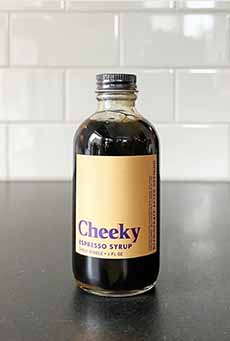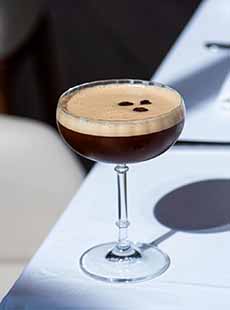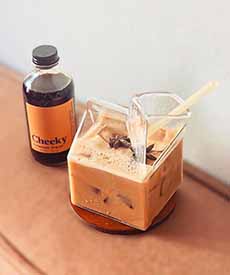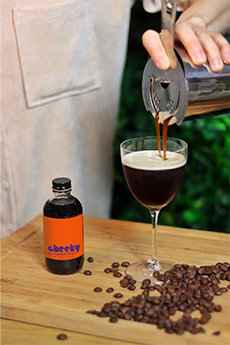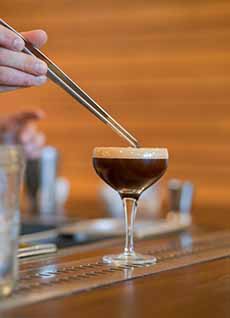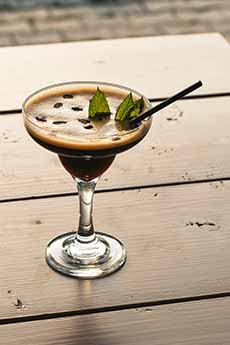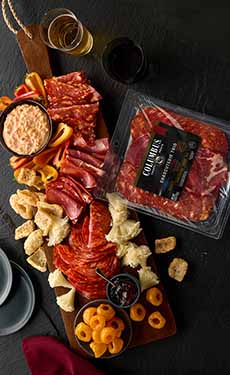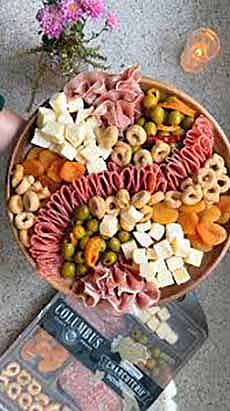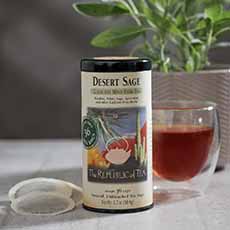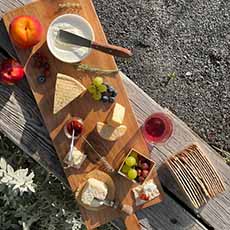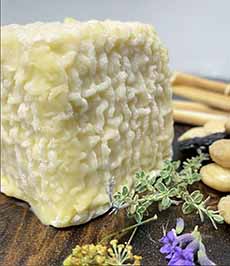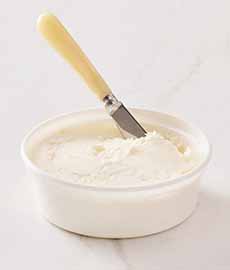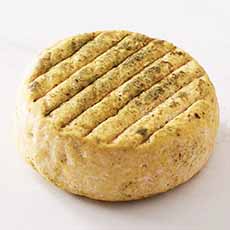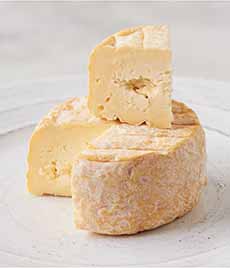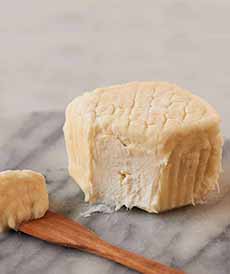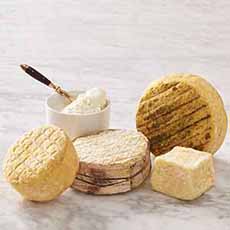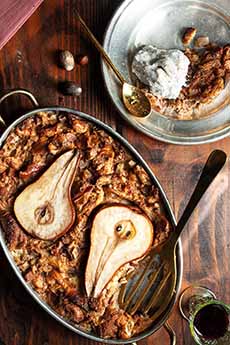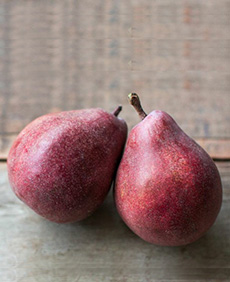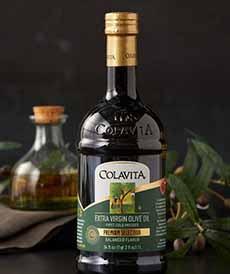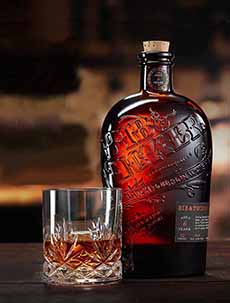THE HISTORY OF CHARCUTERIE
The history of charcuterie begins in ancient times, when people cured meats with salt and spices or by smoking, to extend their shelf life.
In the millennia before refrigeration, this was essential and practiced by cultures around the world. But it was in medieval France that charcuterie became a specialized craft. A guild of charcutiers (pork butchers) was established in the 15th century.
The word “charcuterie” comes from the French words “chair” (flesh) and “cuit” (cooked).
These charcutiers improved upon existing methods for curing, fermenting, and smoking. They developed strict regulations for meat preparation, and created new techniques to make pâtés, sausages, and terrines.
A guild for charcutiers was was formally established in France in 1475. Guilds were an early form of professional association, with different guilds established for different trades. (The charcutiers guild was separate from the butchers guild††.)
There were craft guilds and merchant guilds. Guilds protected the interests of the craftsmen and merchants, and ensured fair competition.
Craft guilds consisted of artisans and craftsmen-architects, bakers, blacksmiths, butchers, dyers, goldsmiths, leatherworkers, masons, metalsmiths, painters, soapmakers, and weavers, for example.
Craft guilds served to regulate the quality of the craftsmen’s work.
Merchant guilds represented the traders and merchants in the field.
From France, charcuterie techniques spread across Europe, with each region developing unique curing and preparation styles.
By the 18th century, charcuterie had become a well-established culinary art.
Classic charcuterie focused on the preservation of meats before the advent of refrigeration. Charcutiers created ballotines, confits, cured meats, galantines, pâtés, rillettes, sausages, and terrines. They were enjoyed simply, often with just bread and mustard; although a more elaborate spread of cheeses and other preserved foods, such as pickled fruits and vegetables, could also be served.
Modern charcuterie is often designed for entertaining, focusing on aesthetic appeal and diverse flavors. Aesthetic and artistic presentations on boards or platters include not just the meats, but artisanal cheeses, breads and crackers, fruits, nuts, vegetables and dips, pickled vegetables, and even sweets like preserves, honeycomb, mini cookies, nougat, chocolates, and fudge.
THE HISTORY OF REFRIGERATION
In the millennia before mechanical refrigeration was available, in areas that had cold winters with ice, wealthy people would have ice harvested from lakes and rivers, and store it in ice houses, dug underground or in caves and lined with straw and sawdust for insulation. Packed snow and ice could be preserved for month
In warmer climates, like Ancient Rome, the wealthy had snow and ice brought from the mountaintops. It was shipped to even warmer climates, like Persia, by barge, packed in straw and sawdust. (The oldest known ice house, a fancy structure built by a king in Persia, dates from about 1700 B.C.E.)
In some hot countries like Egypt and Egypt, scientists figured out the process of evaporative cooling. Water placed in shallow trays during cool tropical nights will evaporate rapidly and can cause ice to form in the trays, even if the ambient air does not fall to freezing temperatures.
The first known artificial refrigeration was demonstrated by William Cullen at the University of Glasgow in 1748. Cullen boiled ethyl ether into a vacuum (see more in the footnote*** below). But like many scientists, he was not a businessman; he was just “in it for the science,” and did not pursue commercial development.
His experiment demonstrated how rapid evaporation of a liquid under reduced pressure could produce cooling, laying the foundation for modern refrigeration techniques. His work significantly influenced future innovations in the field.
The Beginnings Of The Refrigeration
In 1805 an American inventor, Oliver Evans, designed the first refrigeration machine that used water vapor instead of liquid water. Evans never constructed his machine, but one using a similar concept was built by an American physician, John Gorrie, in 1844 [source].
In the interim, the first vapor-compression refrigeration system was invented by Jacob Perkins, an American inventor, mechanical engineer and physicist, in 1834, using ether in a closed cycle to create cooling effect. (It was actually an ice machine that created ice using ether as a coolant.)
The fundamental methods of mechanical refrigeration were only discovered in the middle of the 19th century.
In 1850 James Harrison developed mechanical refrigeration for industrial use. It was first used to create refrigerated ships to transport meat internationally.
Breweries and meatpacking industries adopted early refrigeration technologies and refrigerated railroad cards were created.
Early Refrigeration For Business & Home
The first ice box was created in 1802 by Thomas Moore, a Maryland farmer and inventor. He insulated a wood box with rabbit fur and packed it with ice to keep dairy products cold during transportation to market.
This innovation significantly improved food preservation. By the 1830s, commercial ice boxes had become more common, made of wood, with a tin or zinc lining replacing the rabbit fur.
It used large blocks of ice harvested from frozen lakes and rivers, with blocks stored for warmer weather. As the blocks melted in the ice box, they required regular ice replacement by ice merchants.
Widespread wooden ice boxes for home use became common in the 1840s, lined with zinc or tin and insulated with materials like sawdust or cork to keep the ice blocks cool. It would be another 80 years before the debut of the electric refrigerator.
Ice boxes became affordable for most middle-class American households beginning around 1880, thanks to:
Reduced manufacturing costs due to industrialization and mass production techniques.
The growth of urban ice delivery networks along with declining ice prices due to improved production and transportation.
By the 1900s, a typical ice box cost from $5-$15—approximately $150-$450 in today’s dollars—making them affordable to many middle-class and working-class families.
Ice boxes were widespread in American homes until electric refrigerators were introduced and the prices came down.
The First Electric Refrigerators
The first electric refrigerator for home use, called the Domelre (for Domestic Electric Refrigerator), was introduced in 1913, invented by an American Engineer, Frederick William Wolf Jr. of Fort Wayne, Indiana. His mode consisted of a unit that was mounted on top of an ice box [source].
It was followed by more advanced models like the Frigidaire in 1918, the first self-contained refrigerator (i.e., a unit that contains all of its components, such as the evaporator and condenser, within the unit itself).
In 1914, Nathaniel B. Wales, an engineer from Detroit, introduced the idea for a practical electric refrigeration unit which later became the basis for the Kelvinator. By 1923, Kelvinator had 80% of the market for electric refrigerators****.
A self-contained refrigerator, with a compressor on the bottom of the cabinet, was invented in 1916 by Alfred Mellowes. His company was purchased in 1918 by William C. Durant, founder of General Motors who began mass producing refrigerators under his new division, Frigidaire (from which comes the nickname, “fridge.”
In 1927, General Electric mass-produced the Monitor-Top‡‡‡ refrigerator.
These early models were expensive, affordable only by more affluent consumers. They cost around $300-$400, equivalent to $4,500-$6,000 in today’s dollars.
But prices ultimately came down, and by the mid-1940s, refrigerators were a standard appliance in most American households.
It should be noted that the first refrigerants used were ammonia and sulfur dioxide—which were toxic and occasionally leaked out.
In 1928 they were replaced by a safer refrigerant, Freon, developed by Charles Kettering and Thomas Midgley Jr. of General Motors.
Freon is a colorless, odorless, non-flammable gas that turns into a liquid when cooled or compressed.
It became the standard refrigerant for home refrigerators until the 1970s, when environmental concerns about chlorofluorocarbons (CFCs were found to have created a hole in the ozone layer) led to a switch to hydrochlorofluorocarbons (HCFCs) and then to hydrofluorocarbons (HFCs), before switching to the more environmentally friendly refrigerants isobutane and propane in 2020.
The Modern Refrigerator
Environmentally friendly refrigerators began to appear in the late 1990s, driven by growing environmental awareness and regulations.
While the first smart refrigerator was introduced by LG in 2000, featuring a digital LCD screen and basic internet connectivity, truly advanced models emerged around 2011-2014, with Samsung and LG leading the innovation.
These models included features like internal cameras, Wi-Fi connectivity, touchscreens, and the ability to track food inventory and expiration dates.
And yes, there’s an app for that. Mobile phones can be use to check food inventory, set expiration date reminders, display recipes, create shopping lists, adjust temperature settings, and receive maintenance alerts.
What’s next? Emerging refrigerator technologies are likely to focus on AI-powered food management, predictive grocery ordering, personalized nutrition recommendations, solar-powered cooling systems, and much more [source: Claude.ai, December 5, 2024].
________________
*Charcuterie is a French term that refers to the art of preparing and presenting cured and cooked meats. The techniques and spices used to cure and age the meats originated in 15th century as a way to preserve meat before refrigeration, and created numerous varieties.
Charcuterie plates/boards often include an assortment of ham/prosciutto, sausage, salami (English/French; salumi is Italian), and other cured meats, served with cheese, fruits (especially grapes, small apples like Lady and Rockit, and dried fruits like apricots and figs), bread/crackers/breadsticks/toasts, and other accompaniments (e.g. gherkins and other pickled vegetables, nuts, sweet spreads (honey, pepper jelly, preserves), even sweets like chocolate- or cocoa-covered nuts, chocolate-covered pretzels, nougat/torrone, and toffee.
**Not all wines are aged in oak barrels. Some are aged in steel, which has a leaner flavor profile. Check with your wine store clerk.
***Here’s how Cullen performed his groundbreaking experiment:
> He used a vacuum pump to lower the pressure over a container of ether, a highly volatile liquid.
> When the pressure was reduced, the ether began to evaporate rapidly. Evaporation requires energy, which the ether absorbed in the form of heat from its surroundings, causing the temperature in the container to drop.
> Cullen placed water near the ether. The heat absorption during evaporation cooled the surrounding water enough to freeze it, showcasing refrigeration by artificial means (i.e., no need for freezing cold weather).
***Kelvinator, a division of American Motors, introduced the first auto-defrost models along with shelves on the inside of their doors and special compartments for frozen juice containers in the freezer. It also pioneered the side-by-side refrigerator freezer in the mid-1950s. In the 1960s, Kelvinator introduced models with “picture frame doors,” allowing owners to decorate their refrigerators to match the décor of their kitchens [source].
†Columbus Craft Meats was purchased 100 years later (in 2017) by Hormel Foods.
††Charcutiers and butchers: the difference. Butchers focus on slaughtering animals and selling raw meat. Charcutiers specialize in processing and preserving raw meat, using curing, smoking, or other techniques to extend the shelf life.
‡There are numerous varieties of mostarda. We prefer to make our own, because we want more tangy mustard and less sweet syrup. For our quickie version, we mix blanched dried fruits (cherries, cranberries, raisins, sultanas) into honey mustard, and spread it on the bread. Here’s a more traditional mostarda recipe.
‡‡Giardiniera is a pickled vegetable relish typically made with a mix of carrots, cauliflower, celery, and peppers, sometimes with olives, marinated in vinegar and oil. Here’s more about it.
‡‡‡The refrigerator was called Monitor-Top because the compressor was mounted on top of the cabinet, making it resemble the shape of the Civil War-era ironclad warship, the USS Monitor.
CHECK OUT WHAT’S HAPPENING ON OUR HOME PAGE, THENIBBLE.COM.
|
